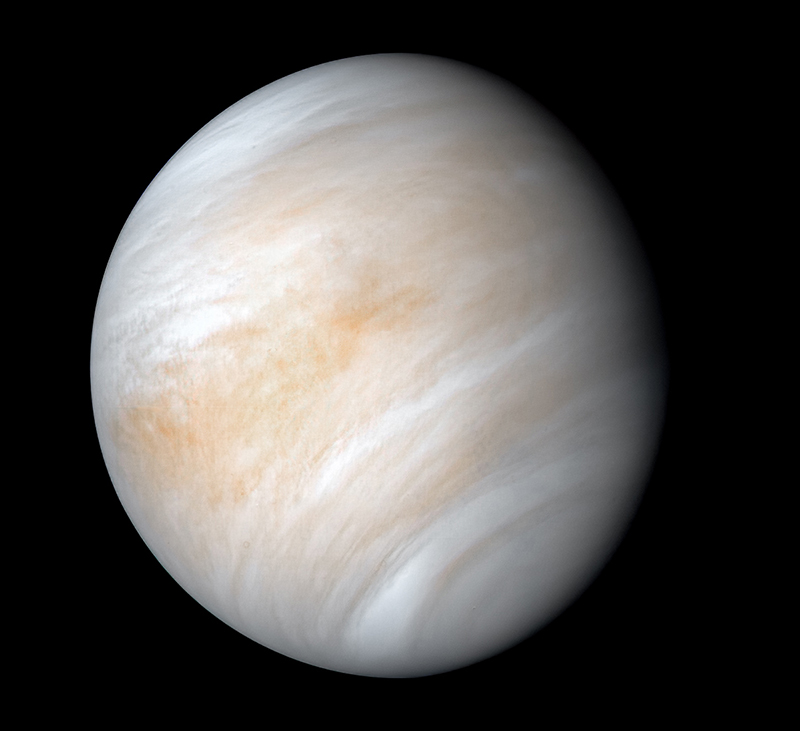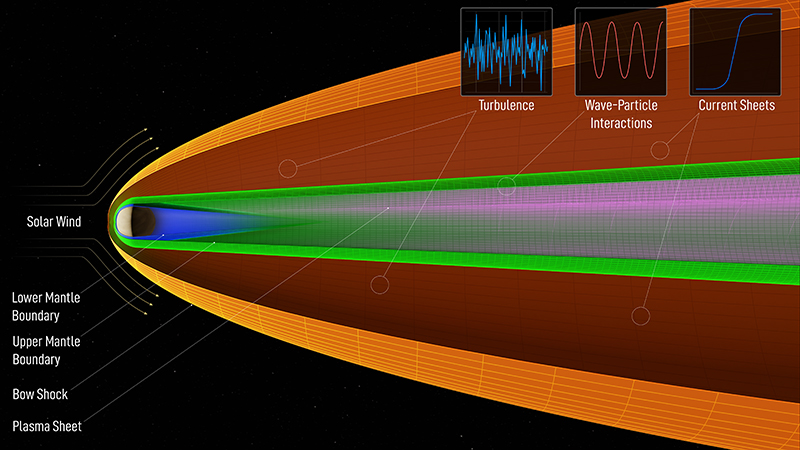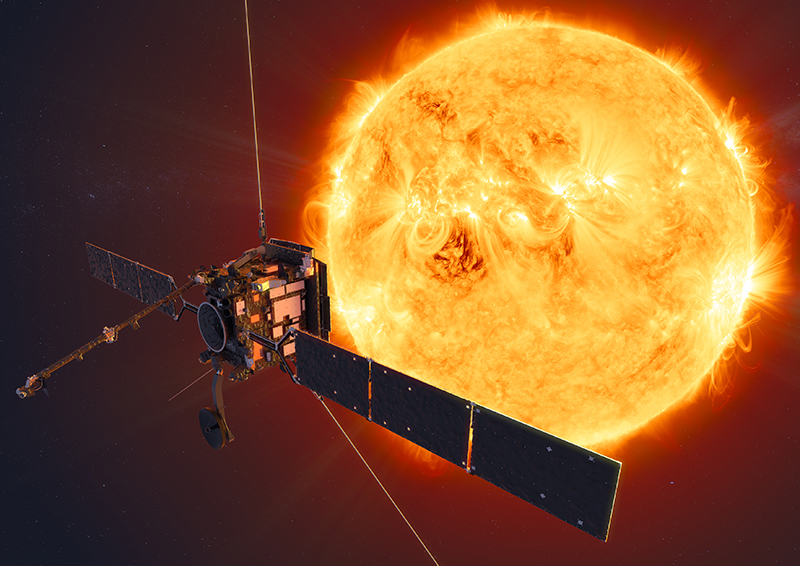News
Solar Mission Reveals New Details About Venus’ Unusual Magnetic Field
Solar Orbiter, a cooperative mission between NASA and the European Space Agency (ESA), will provide groundbreaking new discoveries about the Sun — including the closest images ever of the Sun and the first images of its poles. But the mission is also making some new discoveries about our next-door planetary neighbor Venus.
A new analysis of Solar Orbiter data collected during its first flyby of Venus last December shows that the planet’s unique magnetic environment, which is not generated by the planet, is still robust enough to accelerate particles to millions of miles per hour. Scientists say this finding, published online May 3, 2021, in Astronomy & Astrophysics, underscores the importance of studying the diversity of magnetic fields in the universe and could be valuable for studying planets in other solar systems.
Unlike Earth, which has an intrinsic magnetic field from the sloshing, molten material inside its core, Venus generates its magnetic field from the interaction of the Sun’s solar wind with the planet’s ionosphere, the atmospheric region filled with charged atoms. Those charged atoms create electric currents. As the solar wind drapes over Venus, it interacts with those currents to produce a full-fledged magnetosphere around the planet.
“It’s kind of this weird, induced magnetosphere,” said Robert Allen, a space physicist at the Johns Hopkins Applied Physics Laboratory in Laurel, Maryland, and the study’s lead author.
Although scientists knew about this unusual magnetosphere from Venus missions flown from the 1960s to the 1980s, there are still many unknowns. The solar wind, for example, drags a planet’s magnetosphere behind the planet to form a “tail,” known as a magnetotail. But how far can an induced magnetosphere extend before it falls apart?
“It’s a much more unstable system,” twisting and undulating with the solar wind, Allen explained.


